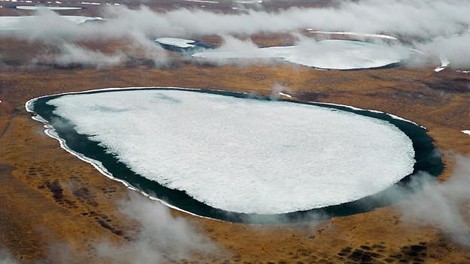Your podcast discovery platform
Curious minds select the most fascinating podcasts from around the world. Discover hand-piqd audio recommendations on your favorite topics.

piqer for: Climate and Environment Global finds
Andrea is a writer and researcher based out of Chicago. Andrea has a Bachelor's degree in environmental science from The Ohio State University and a Master's in Environmental Planning and Management at National Taiwan University, where she specialized in climate adaptation and urbanization. She writes for TaiwaneseAmerican.org, and sends out a biweekly newsletter which includes articles on politics, environment, identity, and intersections of race, class, and gender (http://eepurl.com/bPv-F5).
There Are Diseases Hidden In The Ice, And They Are Waking Up
There are nameless perils hiding under the world's permafrost. Except, with climate change, they might not be frozen for much longer. The temperature of the Arctic is warming at much faster rates than other parts of the globe, which means that large swaths of permafrost, some of which has been frozen for hundreds if not thousands of years, will melt and unleash previously dormant microbes like bacteria and viruses. This means that climate change could be opening up "a Pandora's box of diseases".
Microbes that caused epidemics in the 18th and 19th century have been preserved in cold, dark, and oxygen-less environments, and could come back to infect again as the climate warms. "For instance, in the 1890s there was a major epidemic of smallpox in Siberia. One town lost up to 40% of its population. Their bodies were buried under the upper layer of permafrost on the banks of the Kolyma River. 120 years later, Kolyma's floodwaters have started eroding the banks, and the melting of the permafrost has speeded up this erosion process." Scientists have been able to revive bacteria from thousands of years ago.
These microbes could be revived, but not infect populations if left isolated and alone. But with the thaw comes those looking to exploit newly accessible resources like minerals and oil. Thus, not only are bacteria being released from frozen soil, but may also be stirred around by new industrial activity. And as many of these microbes have not been around for a long time, they often still have antibiotic resistance and humans have no built up immune defenses against them.
The truth is, we don't know what is under that permafrost. But we might be finding out pretty soon.

Michael Crichton couldn't have come up with a better apocalyptic sci-fi scenario. I can't stop thinking about this article—so disturbing and fascinating! Thanks for choosing it.